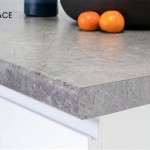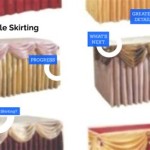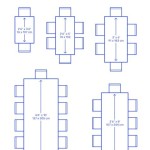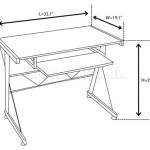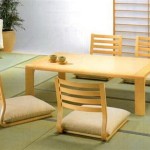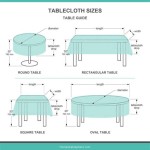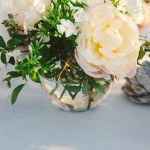Dining Table Bench Cushion: Comfort and Style for Your Dining Space
The dining table bench cushion is a versatile and functional accessory designed to enhance the comfort and aesthetic appeal of dining room furniture. Unlike individual chairs, benches offer a communal seating arrangement, fostering a more intimate and relaxed dining experience. The addition of a cushion further elevates the comfort level, making extended meals and conversations more enjoyable. This article will examine the various aspects of dining table bench cushions, including material choices, design considerations, size and fit, maintenance, and their overall impact on the dining experience.
A dining bench, especially one made of wood or other hard materials, can become uncomfortable after a relatively short period. A well-chosen cushion mitigates this discomfort by providing padding and support, allowing individuals to sit comfortably for longer durations. This is particularly beneficial for families with children, individuals with back problems, or anyone who appreciates a more relaxed dining setting. Beyond comfort, bench cushions also allow homeowners to introduce color, texture, and personal style into their dining room, transforming a utilitarian piece of furniture into a focal point.
Material Matters: Selecting the Right Fabric and Fill
The choice of materials for a dining table bench cushion significantly impacts its comfort, durability, and overall aesthetic. The cover fabric and the interior fill both play crucial roles in determining the cushion's performance and longevity. Consider the following material options for both the cover and the fill:
Cover Fabric Options:
Cotton: Cotton is a natural fiber known for its softness, breathability, and affordability. It is a comfortable choice for everyday use but may be susceptible to staining and fading if not treated with a stain-resistant finish. Cotton is relatively easy to clean and comes in a vast array of colors and patterns.
Linen: Linen is another natural fiber prized for its durability and elegant texture. It is stronger than cotton and has a natural resistance to mildew and moths. Linen tends to wrinkle easily, which can contribute to a relaxed, informal aesthetic. Like cotton, linen is breathable and comfortable; however, it may also require stain protection.
Polyester: Polyester is a synthetic fabric known for its durability, stain resistance, and affordability. It is less prone to fading and wrinkling compared to natural fibers. Polyester is a practical choice for busy households with children or pets.
Olefin: Olefin is a synthetic fiber known for its exceptional durability and resistance to stains, moisture, and fading. It is often used in outdoor furniture cushions due to its weather-resistant properties, making it a suitable choice for dining areas prone to spills or moisture. Olefin cushions are easy to clean and maintain.
Solution-Dyed Acrylic: This is a premium synthetic fabric specifically designed for outdoor use but is also suitable for high-traffic indoor areas. Solution-dyed acrylic is incredibly resistant to fading, stains, and mildew, making it a durable and long-lasting option. It offers vibrant colors and a soft feel.
Leather or Faux Leather: Leather offers a luxurious and durable option for bench cushions. It is resistant to wear and tear and develops a unique patina over time. Faux leather provides a more affordable alternative with a similar aesthetic; however, it may not be as durable as genuine leather. Both leather and faux leather are relatively easy to clean.
Fill Material Options:
Foam: Foam is a common filling material that provides cushioning and support. Different densities of foam are available, ranging from soft to firm. High-density foam offers better support and durability compared to low-density foam. Memory foam conforms to the body's shape, providing customized comfort. Foam cushions can be cut to different sizes and shapes.
Polyester Fiberfill: Polyester fiberfill is a lightweight and affordable filling material. It is soft and comfortable but tends to flatten over time with use. Fiberfill is a good option for cushions that are not used frequently or for accent pillows.
Down or Feather Fill: Down and feather fill provide a luxurious and plush feel. They are incredibly soft and comfortable but require regular fluffing to maintain their shape. Down and feather fills are more expensive than foam or fiberfill.
Combination Fill: Some cushions utilize a combination of fill materials, such as a foam core wrapped in a layer of down or fiberfill, to achieve a balance of support and comfort. These hybrid options can offer the benefits of both materials.
Design Considerations: Style, Shape, and Attachment
The design of a dining table bench cushion plays a critical role in complementing the overall aesthetic of the dining room and ensuring a secure and comfortable seating experience. When choosing a cushion, several design elements should be considered:
Style: The style of the cushion should complement the overall design of the dining table and chairs. Consider the existing color palette, furniture style (modern, traditional, rustic), and any existing patterns or textures in the room. Cushions can be used to introduce a pop of color, a subtle pattern, or a contrasting texture to create visual interest.
Shape: Bench cushions are available in various shapes, including rectangular, square, round, and custom shapes. The shape of the cushion should match the shape of the bench. A rectangular cushion is the most common choice for rectangular benches. For benches with curved edges, a custom-shaped cushion may be necessary for a perfect fit.
Thickness: The thickness of the cushion affects its comfort level and overall appearance. A thicker cushion provides more padding and support. However, a cushion that is too thick may make it difficult for individuals to sit comfortably at the table. Consider the height of the bench and the table when selecting the cushion thickness.
Edge Style: The edge style of the cushion can also contribute to its overall aesthetic. Options include knife-edge, boxed-edge, and bullnose-edge. A knife-edge cushion has a simple, clean look, while a boxed-edge cushion has a more structured and tailored appearance. A bullnose-edge cushion has a rounded edge that softens the overall look.
Attachment Methods: How the cushion is secured to the bench is an important consideration for safety and convenience. There are several methods to attach a cushion to a bench:
Ties: Ties are fabric straps that are sewn onto the cushion and used to secure it to the bench. Ties are a simple and effective way to keep the cushion in place. They can be tied around the bench legs or through pre-drilled holes. The durability depends on fabric used for the ties.
Non-Slip Backing: Cushions with a non-slip backing are designed to stay in place without the need for ties or straps. This is a convenient option, but the effectiveness of the non-slip backing may vary depending on the surface of the bench.
Hook and Loop Fasteners: Hook and loop fasteners (such as Velcro) can be used to attach the cushion to the bench. One side of the fastener is attached to the cushion, and the other side is attached to the bench. This is a secure and easy-to-use option.
Buttons or Snaps: Buttons or snaps can be used to attach the cushion to the bench, providing a more streamlined and integrated look. This method requires careful planning and precise placement of the buttons or snaps.
Custom Fit: Investing in a custom-made cushion ensures a perfect fit for the bench. A professional cushion maker can create a cushion that is tailored to the exact dimensions and shape of the bench, and can also incorporate any desired features or design elements.
Size and Fit: Ensuring Proper Dimensions
Proper size and fit are crucial for the functionality and aesthetic appeal of a dining table bench cushion. A cushion that is too large or too small will not only look out of place but also compromise comfort and stability. Accurate measurements and careful consideration of the bench's dimensions are essential when selecting or commissioning a cushion.
Measuring the Bench: The first step to determining the appropriate cushion size is to accurately measure the length, width, and depth of the bench seating area. Use a measuring tape to obtain precise measurements. Measure the longest and widest points of seating. If the bench has a curved or irregular shape, take multiple measurements at different points to capture the variations.
Cushion Length and Width: The cushion's length and width should closely match the length and width of the bench seating area. A cushion that is slightly smaller than the bench is preferable to one that is too large. A small gap between the cushion and the edge of the bench can prevent the cushion from bunching up or looking overcrowded. A cushion that is too large will overhang the edges of the bench, creating an awkward and potentially unstable seating surface.
Cushion Depth (Thickness): The cushion's depth, or thickness, is a matter of personal preference and comfort. A thicker cushion provides more padding and support, but it can also raise the seating height, potentially making it uncomfortable for individuals to sit at the table. Consider the height of the table and the height of the bench when choosing the cushion thickness. A thickness of 2 to 4 inches is a common range for dining table bench cushions.
Custom Sizing: For benches with unusual shapes or dimensions, custom sizing may be necessary to achieve a perfect fit. Many online retailers and local upholstery shops offer custom cushion services. Provide accurate measurements of the bench, and specify any desired features or design elements. A custom-made cushion ensures that the cushion fits the bench perfectly, maximizing comfort and aesthetic appeal.
Pre-Made Cushion Sizes: Pre-made cushions are available in a range of standard sizes. Before opting for a pre-made cushion, carefully compare the measurements of the bench to the available cushion sizes. Choose the cushion size that is closest to the bench's dimensions, erring on the side of slightly smaller rather than larger. Pay attention pre-made cushion dimensions when purchasing.
Clearance and Accessibility: When selecting a cushion size, also consider clearance around the table and accessibility for diners. A larger cushion, while comfortable, can make it difficult for individuals to easily slide in and out of the bench. Ensure that there is sufficient legroom and space for comfortable movement around the dining area.

Mid Century A Frame Dining Bench Cushion 52 West Elm

Smoked Oak Cushion For Bench Only Furniture World

Bench Seat Cushion Cream Piped Picnic Wooden Made To Order Washable Removable Zipper On Back Conservatory Dining Room Denmark

60 X 14 Solid Color Natural Tufted Bench Cushion Seat

Buy Yellow Fl Kitchen Bench Seat Cushion Piped Washable Removable Zipper On Back Dining Room Custom Made Cushions Pillow In

Jual Bench Covers High Stretch Slipcover For Dining Room Seat Cushion Cover C Di Er Homyl Shehen Indonesia Blibli

Diy Modern Bench Cushion With Leather Straps Francois Et Moi Home Interior Accessories

Buy Natural Bench Cushion Cotton Linen Blend From Next Poland

How To Sew A Bench Cushion Rustic Elegant Home Living Space Decor Furniture

Norfolk Oak Blue Painted Dining Bench Cushion Grey Check The Co


